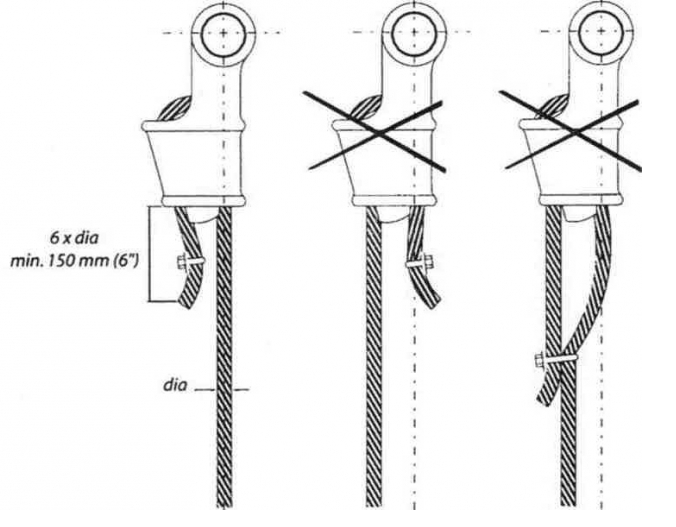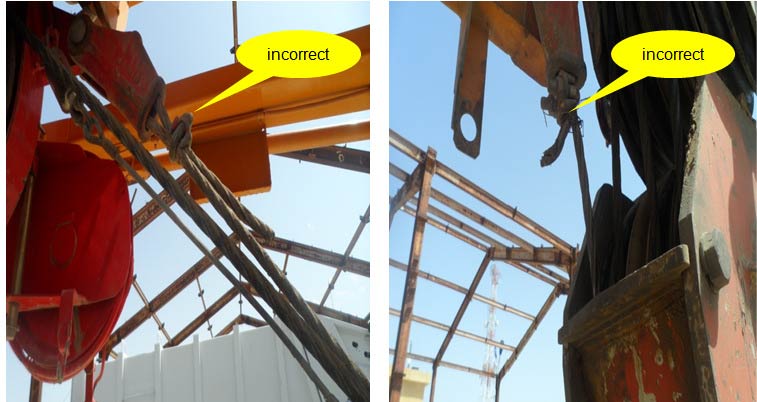Crane wire rope grip incorrectly fitted
A near miss incident has come to IMCA’s attention in which a crane wire rope termination was found to be incorrectly fitted. Before starting work at a land-based site, a 30 tonne mobile crane was inspected, and a rope clamp (bulldog) attached to the hoist ropes ‘dead end’ was found to be incorrectly fitted causing crushing and damage to the ‘live end’ of the wire rope (the part of the wire rope that takes the load strain).
The incorrect selection or fitting of wire rope grips drastically reduces the efficiency of the wire rope terminations and can cause the wire rope to slip through the grips, potentially leading to the harm of people and damage to the equipment.
The bridge of the clamp must always be fitted on the working part (live end) of the rope, and the U bolt on the rope tail (dead end) of the rope.

For a wedge Socket, the wire rope grip should NOT be connected to the live rope. It should only be connected to the dead end of the rope. Any clamping at all, bridge or U bolt, to the live end of a rope terminated with a wedge socket can cause damage and crushing and is not recommended.

The following lessons were learnt:
- Ensure correct type of wire rope grip is selected when terminating wire ropes;
- Ensure wire rope grips are correctly fitted;
- Watch out for signs that may indicate broken wires; e.g. reduction in rope diameter, corrosion or rope deformation.
Members may also wish to refer to Guidelines for lifting operations.
Safety Event
Published: 13 May 2014
Download: IMCA SF 07/14
IMCA Safety Flashes
Submit a Report
IMCA Safety Flashes summarise key safety matters and incidents, allowing lessons to be more easily learnt for the benefit of all. The effectiveness of the IMCA Safety Flash system depends on Members sharing information and so avoiding repeat incidents. Please consider adding [email protected] to your internal distribution list for safety alerts or manually submitting information on incidents you consider may be relevant. All information is anonymised or sanitised, as appropriate.
IMCA’s store terms and conditions (https://www.imca-int.com/legal-notices/terms/) apply to all downloads from IMCA’s website, including this document.
IMCA makes every effort to ensure the accuracy and reliability of the data contained in the documents it publishes, but IMCA shall not be liable for any guidance and/or recommendation and/or statement herein contained. The information contained in this document does not fulfil or replace any individual’s or Member's legal, regulatory or other duties or obligations in respect of their operations. Individuals and Members remain solely responsible for the safe, lawful and proper conduct of their operations.
